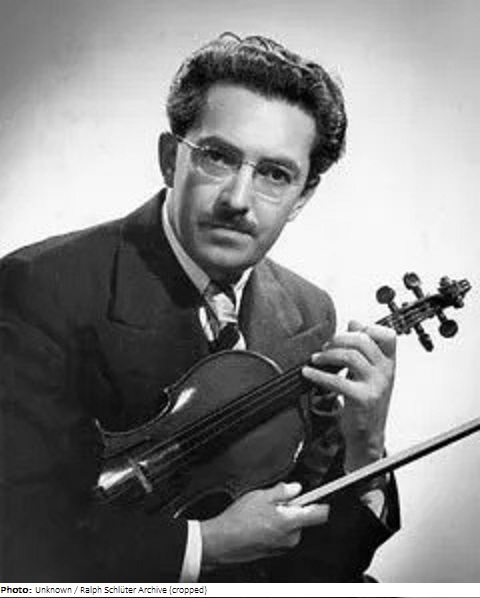Murray Adaskin

Biographical information
| Roles | Competed in Olympic Games (non-medal events) |
|---|---|
| Sex | Male |
| Full name | Murray•Adaskin |
| Used name | Murray•Adaskin |
| Born | 28 March 1906 in Toronto, Ontario (CAN) |
| Died | 6 May 2002 |
| NOC |  Canada Canada |
Biography
Murray Adaskin grew up in a Jewish-Latvian family in Canada. He showed early skills on the violin and then studied at the Toronto Conservatory of Music. After initially providing musical accompaniment for silent film screenings, he served as a member of the Toronto Symphony Orchestra from 1923-36. Subsequently, he was a member of the Royal York Hotel Trio until 1952.
To further his education as a composer, he studied with Canadian John Weinzweig and Frenchman Darius Milhaud (1892-1974), amongst others, and was particularly influenced by Igor Stravinsky. After his time with the Royal York Hotel Trio, Adaskin became head of the music department at the University of Saskatchewan, where he was appointed composer-in-residence. At the same time, he directed the Saskatoon Symphony Orchestra, where he strengthened the field of new music.
In 1972 he retired as a freelance composer to Victoria on Vancouver Island, where he wrote the majority of his works. In 1980, Adaskin was awarded the Order of Canada and a year later was made an Officer of the Order. His brothers Harry (1901-94) and John Adaskin (1908-64) were also well-known musicians. In 1988, Murray was preceded in death by his first wife, soprano Frances James (1903-88). His second wife, Asta Dorothea Larsen (*1924), assisted him in recording his last works.
The Ballet Symphony from 1951 was one of his early works. It comprised six movements labeled March, Allegro, Pas de deux, Fugue, Adagio and Finale (Rondo Allegro) with a total length of about 26-minutes. The premiere took place in March 1952 at Massey Hall in Toronto during the annual concert of the Canadian League of Composers with the Toronto Symphony Orchestra. The work was written during a workshop with Darius Milhaud in Carpinteria, California. Murray dedicated the work to his brother John. The attempt to perform it as a ballet, however, failed. The Ballet Symphony is included in the 5 LP box set “Murray Adaskin – Anthology of Canadian Music”, released in 1986.
Results
| Games | Discipline (Sport) / Event | NOC / Team | Pos | Medal | As | |
|---|---|---|---|---|---|---|
| 1952 Summer Olympics | Art Competitions |  CAN CAN |
Murray Adaskin | |||
| Music, Compositions For Orchestra, Open (Olympic (non-medal)) |